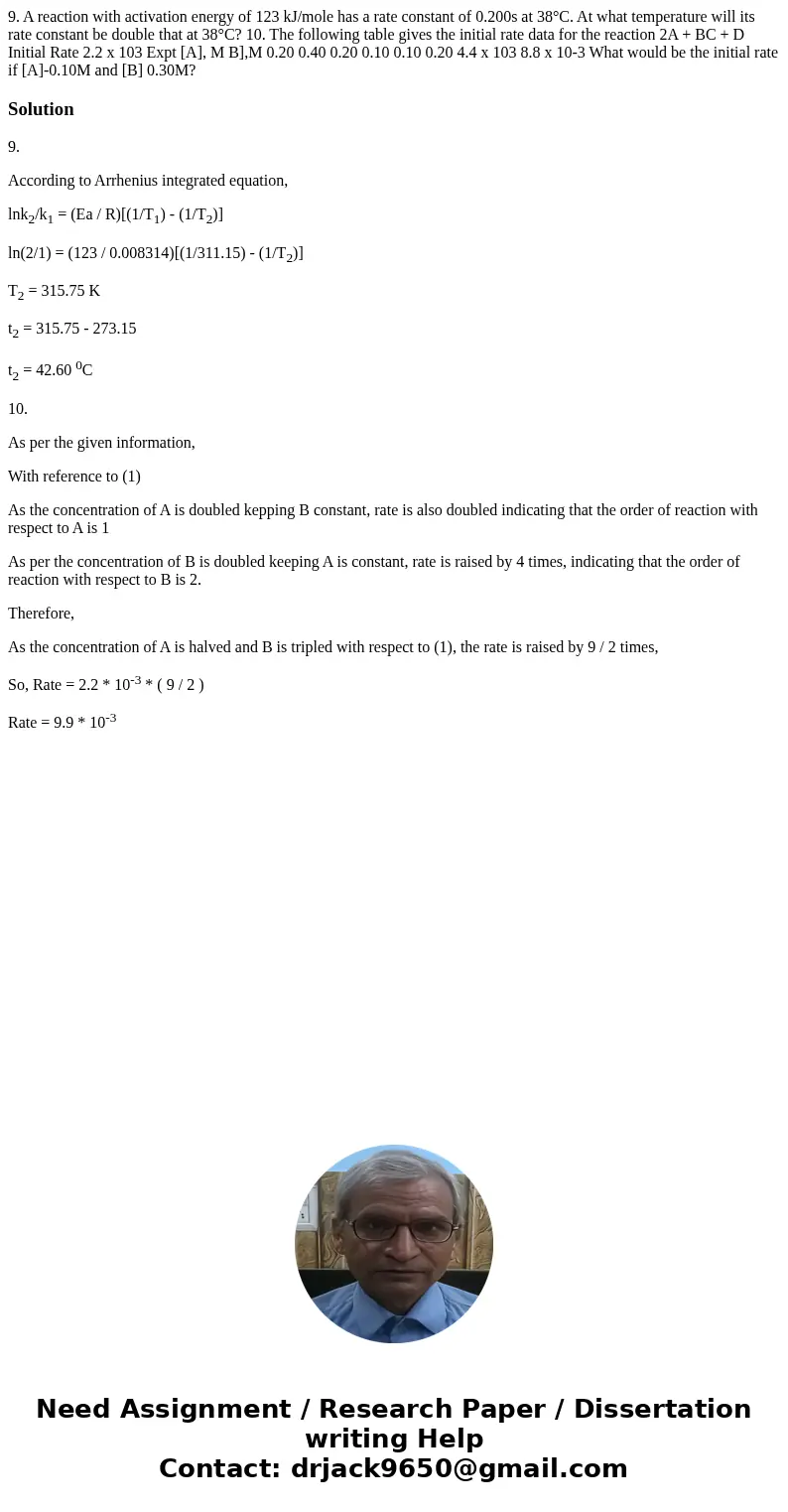9 A reaction with activation energy of 123 kJmole has a rate
9. A reaction with activation energy of 123 kJ/mole has a rate constant of 0.200s at 38°C. At what temperature will its rate constant be double that at 38°C? 10. The following table gives the initial rate data for the reaction 2A + BC + D Initial Rate 2.2 x 103 Expt [A], M B],M 0.20 0.40 0.20 0.10 0.10 0.20 4.4 x 103 8.8 x 10-3 What would be the initial rate if [A]-0.10M and [B] 0.30M? 
Solution
9.
According to Arrhenius integrated equation,
lnk2/k1 = (Ea / R)[(1/T1) - (1/T2)]
ln(2/1) = (123 / 0.008314)[(1/311.15) - (1/T2)]
T2 = 315.75 K
t2 = 315.75 - 273.15
t2 = 42.60 0C
10.
As per the given information,
With reference to (1)
As the concentration of A is doubled kepping B constant, rate is also doubled indicating that the order of reaction with respect to A is 1
As per the concentration of B is doubled keeping A is constant, rate is raised by 4 times, indicating that the order of reaction with respect to B is 2.
Therefore,
As the concentration of A is halved and B is tripled with respect to (1), the rate is raised by 9 / 2 times,
So, Rate = 2.2 * 10-3 * ( 9 / 2 )
Rate = 9.9 * 10-3

 Homework Sourse
Homework Sourse